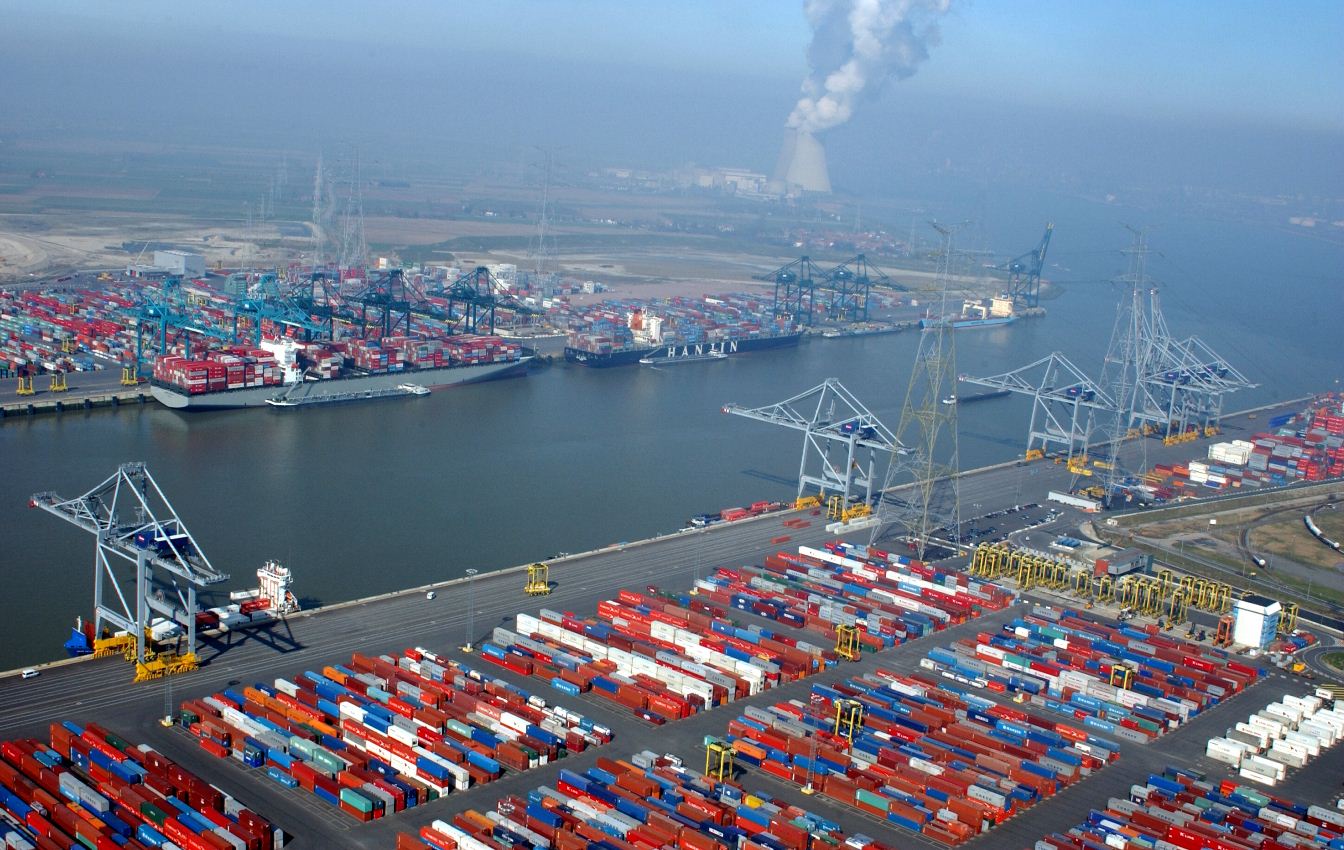Smart port with blockchain
22.12.2017“Smart Port” is part of a five-pronged programme being developed by the city of Antwerp to become a European leader for the Internet of Things. The Antwerp start-up T-Mining has already taken a first concrete step towards this, with a secure system for collecting containers in the port.
 The key to this application is blockchain technology which enables rights to be transferred from one party to another in a secure way that cannot be challenged. T-Mining CEO Nico Wauters outlines the problem for which blockchain offers a solution.
The key to this application is blockchain technology which enables rights to be transferred from one party to another in a secure way that cannot be challenged. T-Mining CEO Nico Wauters outlines the problem for which blockchain offers a solution.
“Drivers who come to collect a container first have to identify themselves at the gate with their Alfapass card. They then present a PIN code relating to a particular container. This PIN code is generated by the terminal operator who passes it on to the forwarder. The forwarder arranges for the transport and gives the code to the carrier. The carrier frequently subcontracts the job to another haulage company: yet another party to whom the code is known. Furthermore the code is sent in all sorts of ways, by email, fax, SMS or whatever. It’s a complicated solution that is not really watertight, because the PIN code can be intercepted, with all the consequences which that entails. Blockchain technology makes this code unnecessary, so that it cannot fall into the hands of a dishonest person.”
How does blockchain technology work in practice?
“Blockchain is a distributed database whose contents are stored on a number of different computers, or nodes,” explains Nico Wauters. “Since any modification to the database is recorded simultaneously on all these computers, it is practically impossible to hack the system or to change the information without authorisation. The database isn’t controlled by a single, central party: instead it’s controlled by everybody on the network. All data and transactions can be recorded only if everyone on the network gives the OK.”
“This makes blockchain the ideal technology for parties that have to collaborate but that are also to a certain extent in competition with each other. They all want to keep control over who knows what and when, and so there is a certain amount of sensitive information that they would rather not share with anyone else. Blockchain gets round this problem, enabling information to be shared in a secure way that cannot be manipulated.”
Has T-Mining already tested this technology on the MPET terminal with a haulier and a forwarder?
Nico Wauters: “We have gathered all the information necessary to release a container in a database. Only the parties involved have access to this information. In addition, digital rights have been created in the blockchain. Only the owner of the corresponding right is allowed to collect the container on the terminal. Thanks to blockchain this right can be transferred between parties. In this way the recipient of the right can be sure that the sender no longer owns it. And so they can also be sure that nobody else can turn up on the terminal, lay claim to the container and make off with it. Everything is recorded in the blockchain.”
“A blockchain network consists of various nodes on which the same information (the ledger) is stored. If one node of the network goes down, the information is still available on the other nodes and so the flow of goods is not interrupted. This of course makes everything much more secure, since fraud is practically excluded.”
“During the past summer we hooked up the respective systems of the terminal and the carrier with the blockchain. The freight forwarder uses our web app, and the truckers use our mobile app to access the blockchain directly on the network.”
How does it work in practice?
Nico Wauters: “Imagine you’re the driver. You check in with your Alfapass at the terminal gate and you open our mobile app. As an additional precaution this app is geofenced so that it only works on the correct terminal. If everything checks out OK, the driver gets a temporary PIN code that is used to collect the container. Eventually we’ll be able to do away with this PIN code so that a message on the app is sufficient to collect the container.”
Apparently the pilot project has now been successfully completed. What are the next steps?
Nico Wauters: “We’re going to develop this into a commercial product by getting as many terminal operators, forwarders, carriers etc. to join the blockchain. We have also signed a collaboration agreement with NxtPort, the Antwerp data platform. The blockchain will additionally make it possible to transfer documents in a secure way, or to obtain a complete overview of the physical progress of the container. In fact there are lots of applications possible with this technology.”
Source: www.bunkerportsnews.com
